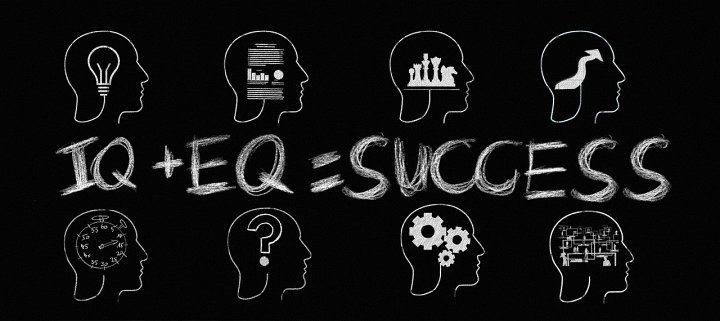Emotional Intelligence and Social Awareness
There is a big difference between our feelings and thoughts, which is emotional intelligence, and the emotions and thoughts of others which is social awareness.
Social conscience, in this case, is one of the pillars of emotional intelligence that helps us make this distinction.
Social awareness is the ability to see things from another person’s point of view, considering their thoughts and feelings about an experience.
Of course, we will never understand exactly how another person feels.
What is the link between emotional intelligence and social awareness?
The connection between Emotional Intelligence and Social Consciousness is that to be able to recognize other people’s feelings is necessary to know how to manage and acknowledge oneself first.
Social Consciousness is a component of Emotional Intelligence; without one, the other couldn’t be complete. In comparison, Emotional Intelligence is the ability to identify a feeling and form a thought without acting based only on how it feels.
And Social Consciousness is the ability to be aware and recognize what other people feel and behave without getting too emotionally engaged.
Therefore, the understanding of the other passes through empathy to precisely understand the feelings of others but retain a certain emotional distance not to identify with the other.
10 Tips for Improving Emotional Intelligence and Social Awareness
If you want to develop your understanding of others, here are some ideas:
1. Be Open-Minded
First, be curious, an observer, and an active listener. Curiosity is sometimes a good quality, so be curious to decipher the emotions of others and try to understand them!
And the most effective is to observe the non-verbal, so you don’t even need to hear what the person is saying: you go to a coffee terrace, watch people pass by, talk, and try to decipher the emotions involved.
In parallel, you can read books on psychology and communication and train to develop your theoretical culture, but it’s secondary; nothing beats the real world.
2. Focus
Second, when getting to know someone focus on that.
Being there hundred percent in the relationship can sometimes be challenging. Still, if you are trying to be aware of their emotions, avoid distractions and not do two things simultaneously.
A good test is kids; they usually notice that they become sad or irritated if you talk to them about thinking of something else.
It also happens to adults when the other one is distracted. But all this can be fixed, and it takes a bit of goodwill and discipline.
3. Ask Questions
Then clarify the situation, ask questions, in particular, to avoid reading thoughts:
- You feel that your interlocutor is in a bad mood, and you wonder if it’s because of you?
- Before you enter into paranoia, you can have your hypothesis validated or corrected, for example, by reformulating: “I have the impression that you are in a bad mood, am I wrong?… Did I have anything to do with it?”
Sometimes you will be used as a lightning rod for frustrations when you have nothing to do with the issue.
But if it’s suitable for the person and allows you to come back peacefully in your discussion, it can be helpful.
4. Broaden your views
Finally, a well-known technique, “perceptual positions” or “chair play,” where we alternate points of view to broaden our perspectives.
For example, for a person with whom communication is difficult, try this game of chairs:
- You place a chair in front of you, representing the other person’s position.
- Remember, it’s virtual; the other one’s not here.
- Sitting on the chair, you tell your version of the story to the chair what to say to the other.
- And you clarify your intent and purpose in the case.
- Then you get up and go to the chair; yes, you become the other person and imagine the situation through his eyes.
- You are now addressing Chair 1, which represents you.
- Similarly, but in the other’s position, you tell your side of the story and clarify your intention and goal.
5. Practice empathy
This will help you better understand the other’s point of view, behavior, and feelings. This is critical to maintaining healthy relationships and developing your emotional intelligence.
In addition, it also helps in communication, problem-solving, broadening your horizons, and seeing situations differently.
For example, you are standing in line at a supermarket. The cashier takes a long time to process each order, and you are starting to lose patience.
A good exercise is to stop and try to see the side of the box. He may be a new employee trying to learn and not going any faster simply because he hasn’t taken up the practice yet.
6. Be aware of your emotions
It cannot be easy to understand others if we cannot identify and understand our own emotions.
So please pay attention to your feelings, what might have motivated them, and the physical signs they show.
Practice your listening skills and pay attention to the way you communicate. Many misunderstandings are the result of poor listening.
Those who do not hear what is appropriately said end up misinterpreting and creating confusion. Therefore, always prioritize listening to what they are telling you.
Make it a habit – too – to confirm that what you understand was what the person meant.
Equally important is knowing how to communicate well yourself and paying attention to your tone of voice, body language, and clarity when speaking.
7. Observe body language
Observe people’s body language in different situations. Notice how well people communicate with their bodies through gestures, posture, or head movement.
Consider that the same gestures can mean different things. For example, think of someone who shrugs their shoulders. This often means “I don’t know” or “I don’t care.”
Or consider what it means when someone folds their arms in front of them. Sometimes that means she wants to get away from the conversation (think of it as a “self-protection” gesture), sometimes it can express anger, or sometimes it’s because the person is cold!
Imagine you have a mute button and mute the sound: Do you think you can determine the context of the conversation by observing how people move?
8. Think about it
Let the person know how you feel about what they share with you. This will help you better understand how the person is feeling.
You can say, “I’m so frustrated after hearing this story about your boss.”
The other person will likely agree with your statement (“Yes! She’s driving me crazy!”) Or tell you how they feel (“I’m so angry after our last meeting”). Either way, you better understand what that person is going through and feeling, which builds empathy.
9. Listen to the tone of voice.
You can use the exact words but change your tone of voice, taking on a different meaning. A person’s tone of voice conveys the emotion behind the words.
For example, think about how “I’m fine” sounds when someone says it in a friendly tone, not an angry tone.
Test your tone of voice by repeating a phrase, imagining that you feel something different each time. How does “You scared me!” when you pretend to be happy, shocked, angry, or sad?
10. Look at the physical distance.
Look at how close or far people are from each other. The space between two people says a lot about a relationship. Pay attention to your physical distance as well.
People in an intimate relationship can stand without any distance between them, while friends can stand closer to each other than co-workers.
If you stand too close to someone, you may notice that they pull away, turn away, lean back, or cross their arms or legs.
If you are too far away from someone, you may notice that they are leaning towards you, squinting, frowning, looking around, and showing only a slight interest in the conversation.
Conclusion
Emotional intelligence and social awareness cannot exist without one other since social consciousness is a component of EI.
When someone is emotionally intelligent, that person has to identify one’s emotions and include other people that are their colleagues, family members, and even strangers.
Reference and Further Reading
Social awareness for emotional intelligence. Workplace Strategies for Mental Health.
TOP 7 BENEFITS OF STRONG SOCIAL SKILLS AS AN ADULT. ACETHEPRESENTATION.






